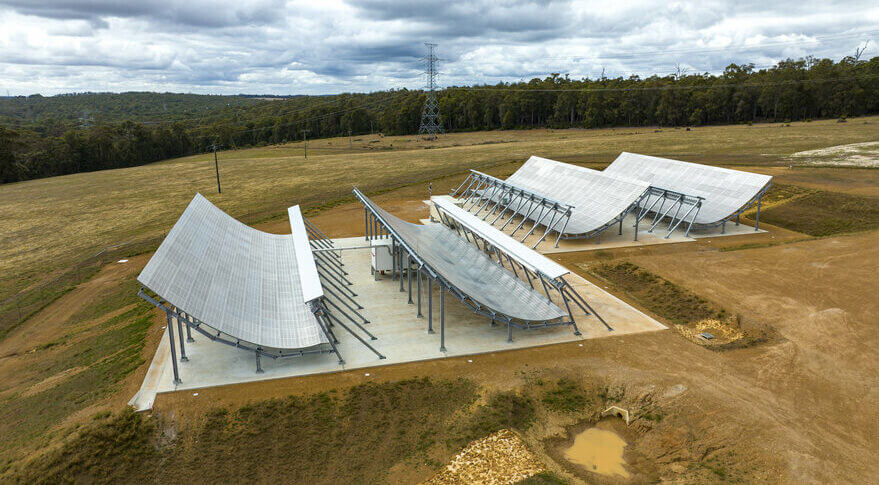
LeoLabs scans skies with West Australian Space Radar (Image Credit: Space News)
SAN FRANCISCO — LeoLabs announced the commissioning Jan. 30 of its West Australian Space Radar to improve tracking of satellites and debris in low-Earth orbit.
LeoLabs tracks more than 20,000 space objects with 10 phased array radars at sites in Alaska, Australia, the Azores archipelago, New Zealand, Texas and Costa Rica.
The two individual radars that comprise LeoLabs’ West Australian Space Radar will bolster the company’s ability to track objects in medium- and high-inclination low-Earth orbits as they pass over the Southern Hemisphere, LeoLabs CEO Dan Ceperley told SpaceNews.
LeoLabs began scanning the skies over the Southern Hemisphere in 2019 with the two radars that make up the Kiwi Space Radar. Now, LeoLabs has four S-band radars operating in the Southern Hemisphere, improving the firm’s ability to spot debris too small to be tracked by conventional means but large enough to damage or destroy spacecraft, Ceperley said.
“We’re extremely excited to increase our coverage of the Southern Hemisphere because it’s essentially half the globe that is not well covered,” Ceperley said. “Trying to improve the safety situation has been a major focus of ours.”
Much of the world’s space-tracking infrastructure is a remnant of the Cold War. The United States and the Soviet Union established facilities in the Northern Hemisphere to watch for missiles traveling over the North Pole. By comparison, the Southern Hemisphere has few space-tracking radars or optical telescopes.
Frequent observation of space objects is important to refining each object’s orbit, spotting maneuvers and identifying potential collisions. Since LeoLabs’ radar network is designed specifically for space traffic management, enhancing coverage of the Southern Hemisphere remains a priority, Ceperley said.
LeoLabs’ West Australian Space Radar, like the company’s S-band radars operating in Costa Rica and the Azores archipelago, off Portugal’s Atlantic coast, can detect track objects as small as 2 centimeters in diameter.
LeoLabs employees in Australia will be responsible for Pacific daytime global radar operations, orbital analytics and providing ongoing observation and analysis of regional activities in low-Earth orbit.
“Considering the strategic importance of the region, LeoLabs will continue to make investments that align with the decades of partnership and collaboration between Australia and the United States, as well as other Indo-Pacific countries,” according to a LeoLabs news release.
LeoLabs began building the West Australian Space Radar in April, finished construction in November and conducted testing in December.
“There is data flowing from the radar now,” Ceperley said.







